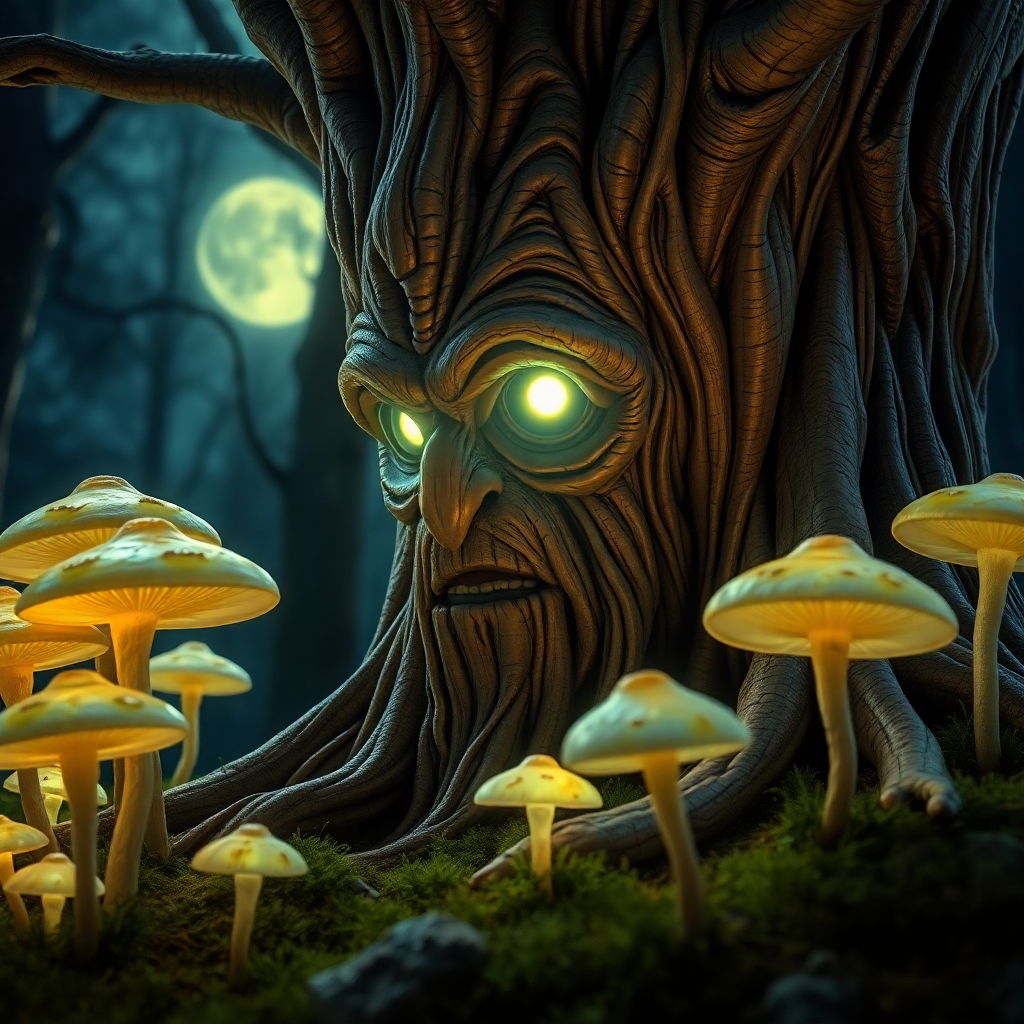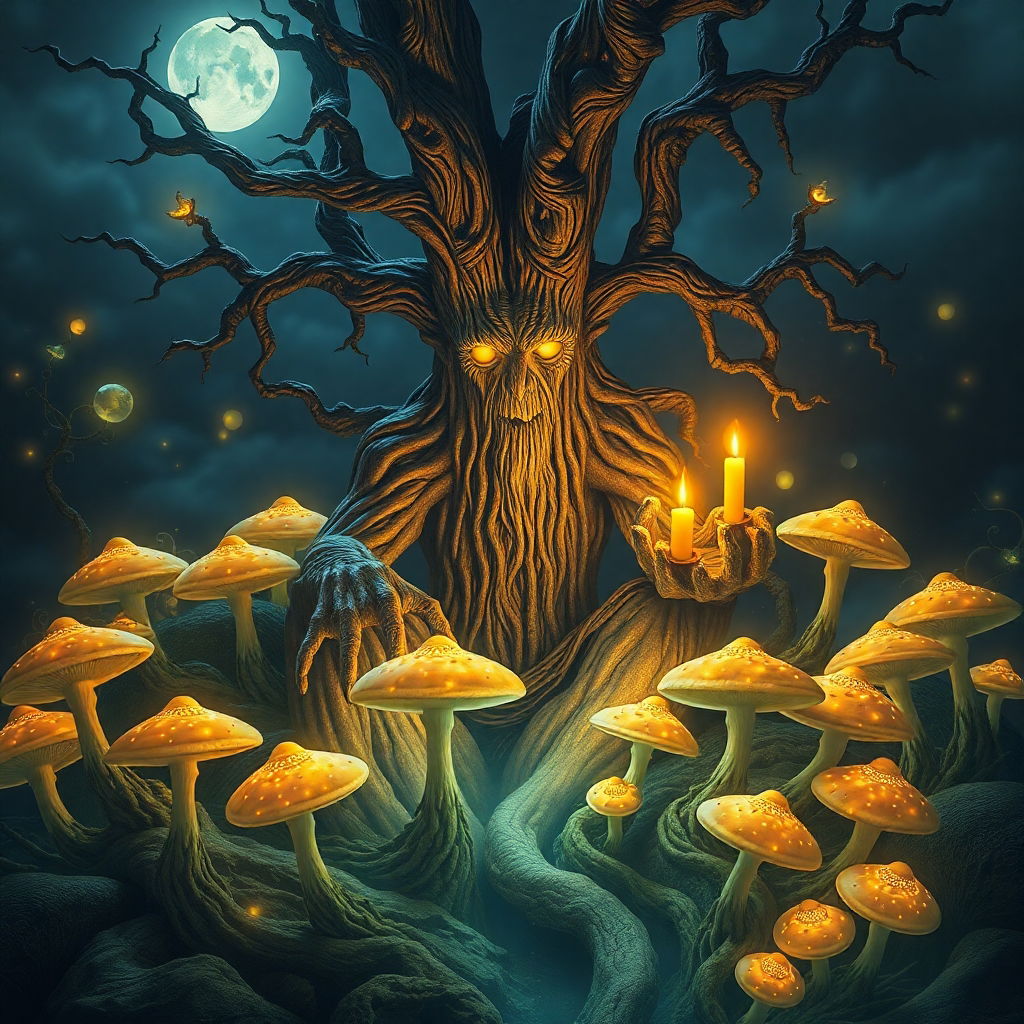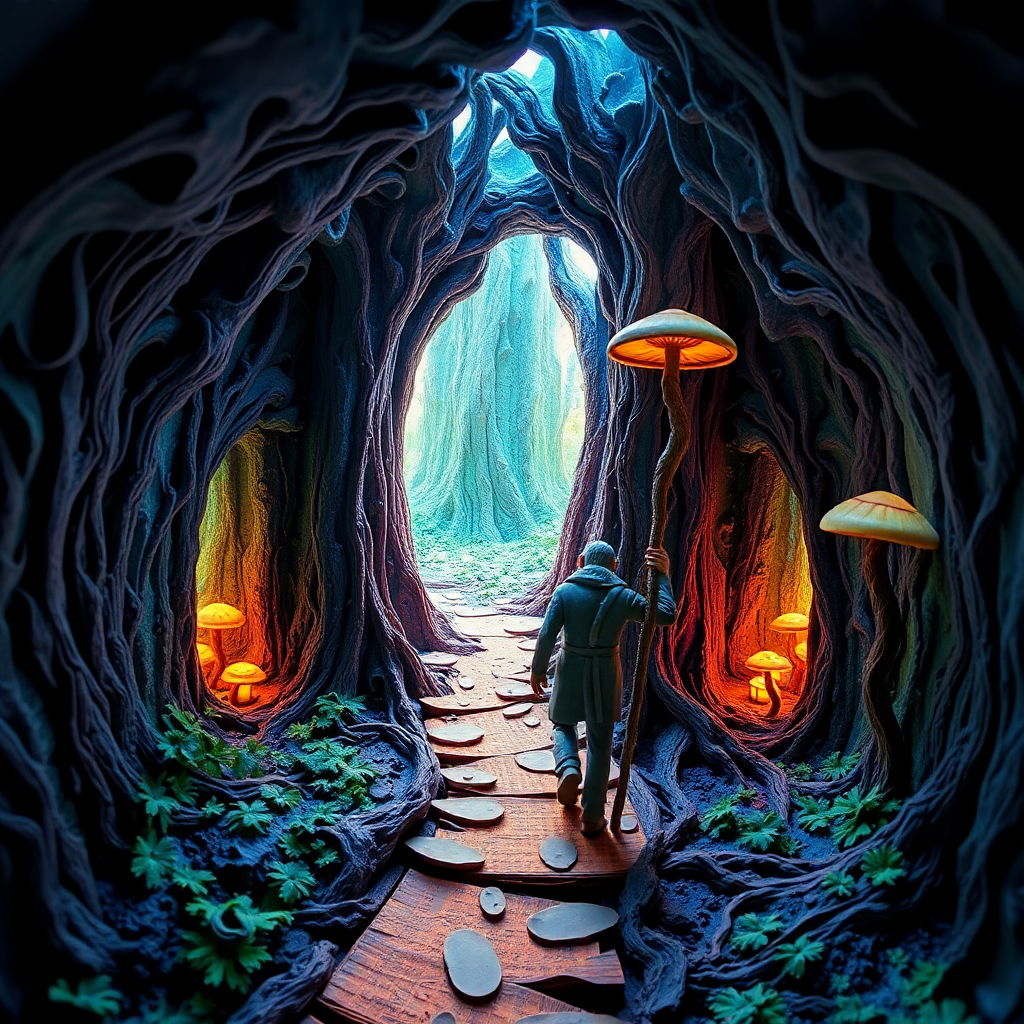Holosophy Tree of Life
When Ents Eat Magic Mushrooms and Awaken the Forest Mind

In J.R.R. Tolkien’s The Lord of the Rings, the Ents are among the most iconic and mysterious creatures in fantasy literature. Towering, ancient, and tree-like, they are guardians of the forest with deep, booming voices and a slow, deliberate wisdom that speaks of an age before the memory of most beings. These sentient trees—especially Treebeard, the oldest of them—aren’t merely fantasy creatures; they are mythic archetypes, rooted (literally) in the ancient connection between man, tree, and earth.
But what if the Ents, in some alternate fungal-touched dimension of Middle-earth, had consumed psilocybin mushrooms? What if these towering beings experienced a shift—not just in perception, but in their very purpose and consciousness?
Ents: Guardians of Nature and Time
Ents are described as “Shepherds of the Trees.” Created by the Valar Yavanna to protect the forests from destruction by Elves, Dwarves, and Men, they represent the living will of nature. They speak slowly because they think slowly, not from dullness, but from a profound deliberation. Their language, Entish, is so slow and deep that it can take hours to say something simple like "hello."
Tolkien gives Ents a sacred duty: protect the woods from industrial devastation, embodied in Saruman’s abuse of Isengard. The Ents’ march on Isengard in The Two Towers is one of fantasy’s most awe-inspiring natural uprisings—slow to awaken, but unstoppable when roused.
Ent-Like Beings in Myth and Fiction
The idea of tree-beings stretches far beyond Tolkien:
- Dryads and Hamadryads in Greek mythology are spirits of the trees, often bound to one specific tree. If the tree dies, so do they.
- Yggdrasil, the Norse World Tree, is not a humanoid being, but it houses realms, gods, and destinies, a sort of cosmic Ent-infrastructure.
- The Green Man, a figure in British folklore, appears in carvings and legends as a humanoid face made of leaves and vines—a spirit of vegetative rebirth.
- In The Chronicles of Narnia, C.S. Lewis includes walking trees and dryads who participate in battles when the land itself rises.
- In modern fantasy, games like The Elder Scrolls and World of Warcraft feature treant-like guardians of the forest who blend elemental magic with plant-based power.
All these beings suggest a mythic impulse: humanity’s ancient need to anthropomorphize trees, giving nature a face, a voice, and agency.
What If Ents Took Magic Mushrooms?

Now imagine this: the Ents, ancient and slow, find a cluster of glowing psilocybin mushrooms deep within Fangorn Forest. Treebeard, old as the stars, decides to chew on one—or maybe a few.
What would happen?
- Altered Consciousness: Ents already operate on a different time scale. Under the influence of psilocybin, they may enter a trance-like communion not just with each other but with all of nature, experiencing the lifeforce of the forest holographically.
- Holosophy: The Ents’ Tree of Life Philosophy: They begin to develop a new form of consciousness: Holosophy—a spiritual, interconnected wisdom system grounded in nature, fungi, and light. Trees begin to glow with bioluminescent runes. Ents speak in fractal harmonics. They see time as a spiral, not a line.
- Expansion Across Fantasy Worlds: With their minds expanded, Ents can now project their consciousness across the realms. Through fungal spores and root systems—like a fantasy version of the mycorrhizal network—they begin to spread into other fantasy universes. Fangorn Forest is no longer just in Middle-earth—it has branches in Narnia, in Faerûn, even in the Mushroom Kingdom.
- Treebeard the Psychonaut: Treebeard becomes the guide—part druid, part mystic, part Carl Jung of the woods. He sings the cosmic songs of root memory, chants in photosynthetic time signatures, and leads rituals beneath moonlight mushrooms. He speaks of the “Green Veil”, the unseen realm where trees dream and time grows sideways.
Ents as Immortal, Magical Beings
Ents were already immortal in many senses—timeless and unaging as long as their forests survived. But now they are immortalized in mind, tapping into a collective arboreal consciousness that connects every leaf, branch, and fungal root across dimensions.
Magic enhances them. They aren’t just slow-speaking trees anymore—they are philosopher-kings of the forest, whose spells are sung, whose weapons are roots, whose allies are spores, lichens, and dreaming ferns.
They no longer fight just Saruman—they resist the spiritual desecration of nature across worlds. They are warriors of the Green Code, defenders of the Sacred Mycelium, visionaries of the Photosynthetic Future.
Final Thoughts: The Ents as Psychedelic Myth

In this alternate entheogenic Middle-earth, Ents become more than guardians—they are gateways. Treebeard isn’t just an old talking tree; he’s a psychonautic shaman, part plant, part god, chanting the cosmic memory of the universe in chlorophyll whispers.
And the forest? It’s alive, awake, and dreaming of a better world—one where all beings move slower, grow deeper, and see the soul in every leaf.
So next time you hear the wind rustle through the trees, ask yourself: is it just wind—or is it the sound of an Ent, high on cosmic spores, whispering truths from the Holosophy Tree of Life?
**“Don’t be hasty,” Treebeard once said.
But maybe, just maybe, he meant:
Don’t be hasty—expand your roots.
Grow deeper. Dream farther. The forest remembers.”